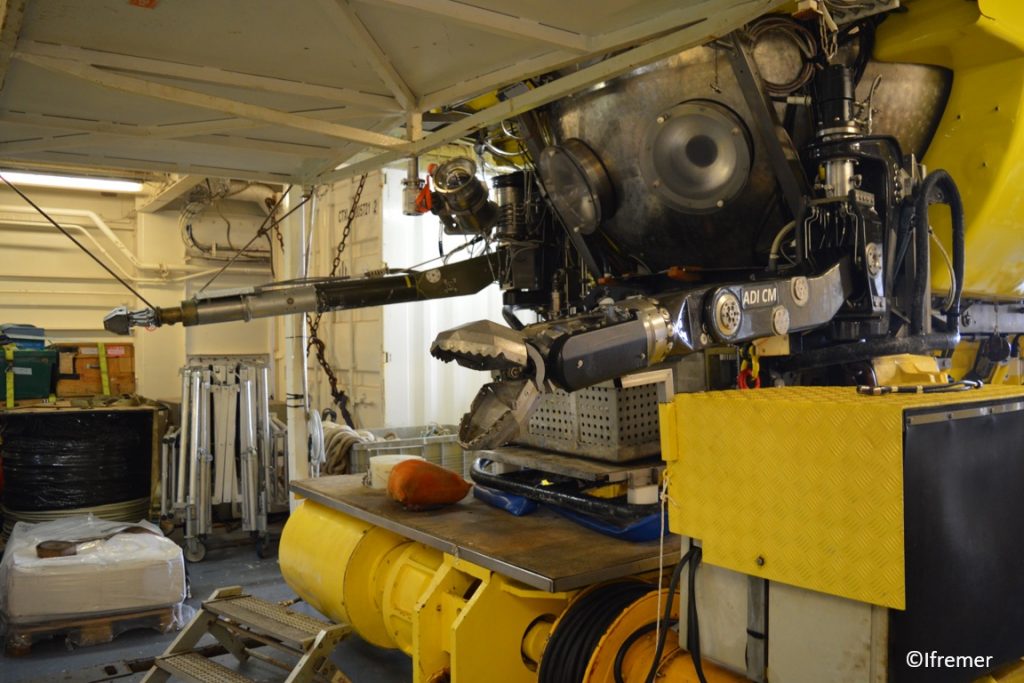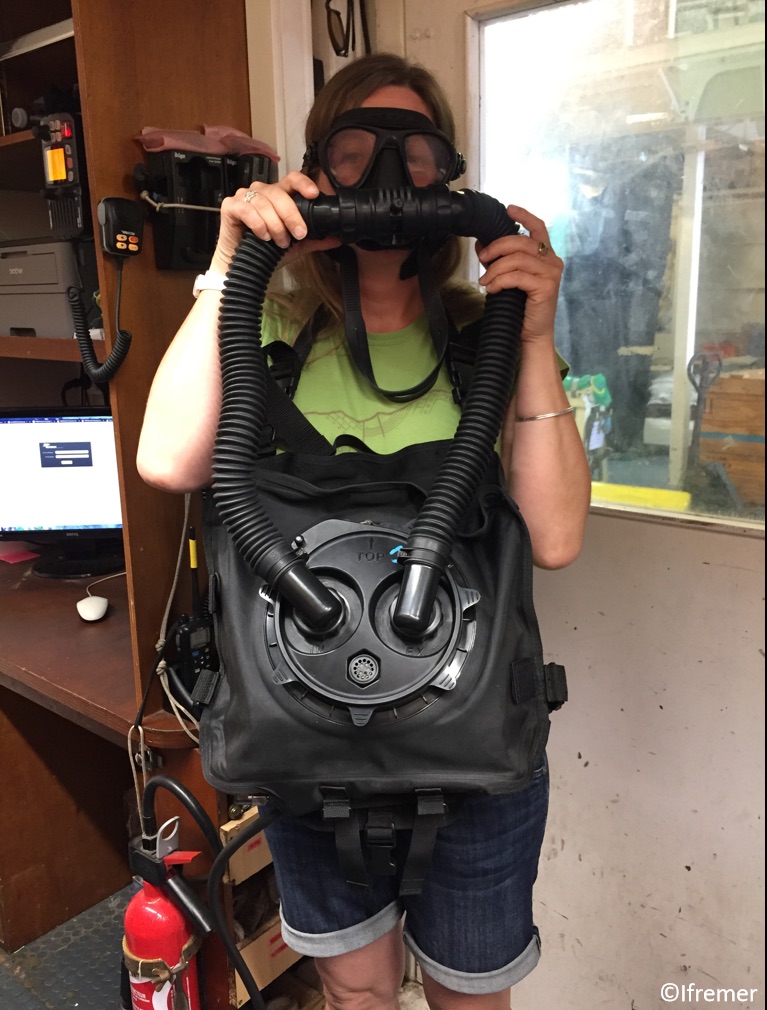During the cruise, we are going to dive with the Nautile. It is a submersible that can dive until 6000 meter deep so we can collect rocks samples and record high quality photographs and videos of the ocean floor. Despite its length, the pilot’s cabin is a bit small. It is a sphere that can receive 3 people, a scientist and a pilot extended at the front, and a copilot who sit behind them. The pilot can control the two arms of the submersible, one for sampling the rocks, the other to hold the submarine if needed. Besides sampling, images recovering will be very important during the dives. A first camera will film the ocean floor during the entire time of the dive. Then we will be able to study the different lithologies, contacts and tectonics encountered. Another high-resolution camera can achieve 3D images. But as high-quality proceeding requires a lot of time, only the magmatic and tectonic structures of interest will be recorded with this camera.
Inside the sphere, there are a lot of navigation equipment and staff for imaging data, moreover important mechanism is here to control the dioxygen rate inside the cabin. Before any dive, Xavier Placaud, the Head Nautile team and Chief pilot, explain us the conduct of a dive and the security rules. Then we visited the Nautile and suited on the oxygen mask that filter the CO2 in case of a failure on the two air filtration systems.
The first dive should occur on the 21rst of Jully. Marcia Maia, our cruise chief scientist, will have the opportunity to lead the first dive in some twenty. This first operation is very important for the Nautile, that musts succeed different tests to officially be able to dive to 6000 meter deep. Thus, Marcia and the two pilots will make the deepest dive of the cruise, and so the longest one. Once on the bottom, the team will check the numerous systems of the submersible to see if everything works perfectly. Then the geological mission will start.
By F. Bonnet

